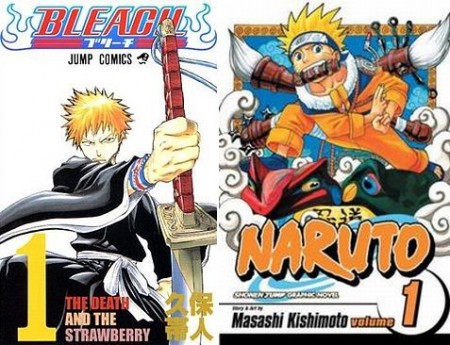Ask John: Does America Still Need Bleach & Naruto?

Question:
Do Naruto and Bleach ending their runs threaten the stability of the American anime/manga market? Or will there be enough holdovers to support second-tier titles? The fickle tastes of teen girls are no doubt a significant factor in why the demand for shoujo imploded here in the mid-2000s. Viz has conceded that the young adult novel market cut into their market share. And the shoujo manga market has never really recovered since then. I don’t doubt the end of the Harry Potter and Twilight books were major contributors to Borders’ demise. So I just hope Naruto and Bleach closing up shop won’t create a similar effect for anime and manga.
Answer:
It may sound trite of me to say that Bleach or Naruto is just single titles regardless of how popular they may be, but the point is actually central to the discussion. Anime fandom existed in America long before Bleach & Naruto, and will continue to exist after them. Consider that the majority of America’s distributors already don’t rely on interest generated by high profile shounen anime. Sentai Filmworks, Maiden Japan, Nozomi Entertainment, Manga Entertainment, Discotek, and NIS America do not have any shounen anime in their catalogs. (By “Shounen” I mean Shonen Jump-style action/adventure anime targeted at 8-12 year-old Japanese boys.) Anime Midstream does distribute a shounen anime, but Muteki Raijin-Oh is certainly not a title that relies on consumer interest generated by Bleach or Naruto. Media Blasters distributes Rurouni Kenshin, but likewise RuroKen is not a title with sales driven by Bleach & Naruto fans. Viz and FUNimation are the only active American distributors that count conventional shounen titles among their highest profile catalog titles, and both distributors have widely varied catalogs that don’t rely on shounen tentpoles.
In the more than thirty years that I’ve been watching Japanese language anime, I’ve personally never encountered a viewer or reader that was strictly interested in only one or two manga/anime titles. If such fans of limited scope exist, they’re not the foundation of the American anime consumer community. A fan who collects only Naruto helps support Viz Media but contributes nothing to the surrounding American anime distribution industry. Thus the loss of that fan would have little noticeable impact on the American distribution industry. The argument may be made that fans of “gateway” shounen titles like Bleach and Naruto become otaku and support a wider range of manga and anime titles, but American consumers were introduced to anime and manga adequately before Bleach and Naruto premiered, and there have always been numerous alternate ways to introduce new fans to anime & manga – ways that don’t require the day’s popular Shounen Jump franchises.
The domestic market and audience for anime is indeed shrinking. I was particularly fascinated by the results of Anime News Network’s June 25, 2012 survey that determined that only 31.2% of the 2992 respondents began regularly reading the news site within the past three years. More than two-thirds of survey respondents that have been regularly following anime industry news are veteran otaku with four or more years of history in the hobby, suggesting that long-time fans are sticking around, but the American fan community is picking up fewer new die-hard fans. If that observation is, in fact, accurate, it’s probably not decade-old titles like Naruto & Bleach that are suddenly inspiring fresh American otaku.
The American manga and anime distribution industry still seems to be developing a new normal following the 2008 crash, but the current industry has largely stabilized a new “normal” of average pricing, anime distribution format (manga format distribution is still highly in flux), episode count distribution, market share, and characteristic genre acquisition. Practically none of these new normal standards is founded on sales generated by tentpole shounen franchises. The anime industry of the early 2000s did heavily revolve around mass market franchises like Dragon Ball, Cowboy Bebop, Gundam Wing, Sailor Moon, Rurouni Kenshin, Naruto, and Pokemon, but today’s core American anime industry is far more focused around otaku niche franchises and culling new fans from online anime distribution and word of mouth than from high profile “gateway” shounen and shoujo franchises.
Add a Comment
You must be logged in to post a comment.


Well, Discotek has the Saint Seiya movies, but no one really supports it in America, so…